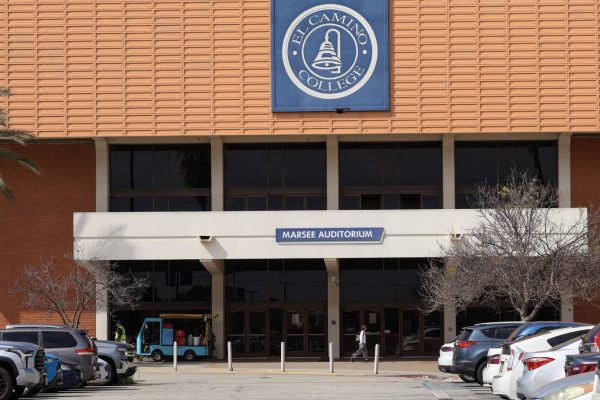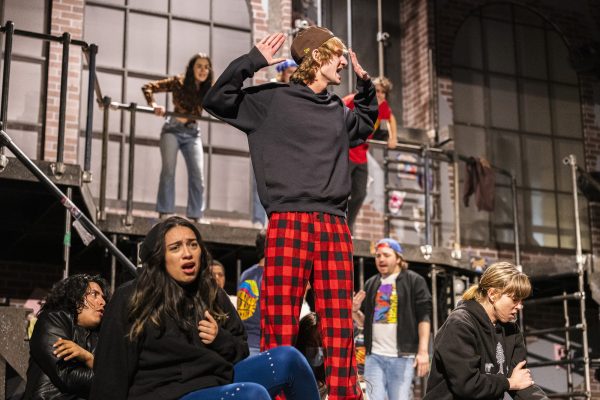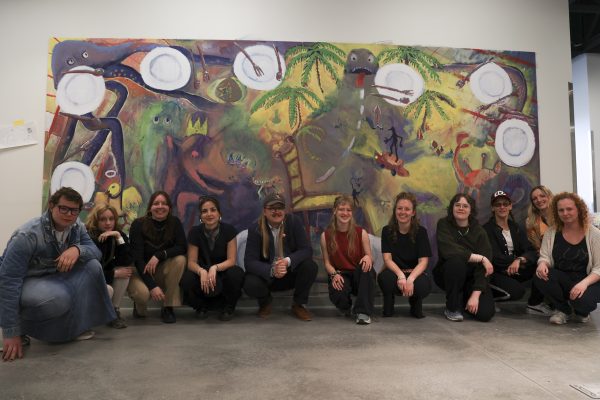NASA Astronaut speaks on campus for Onizuka Space Science Day
Onizuka Space Science Day 2022 keynote speaker, Michael Reed Barratt, doctor of internal and aerospace medicine and a National Aeronautics and Space Administration (NASA) astronaut since 2000, and event hosts, El Camino College president and superintendent Brenda Thames, and Tim Stowe, president since 2010 of the Onizuka Memorial Board, welcome hundreds of elementary, middle and high-school students to the campus of ECC in Torrance on Saturday, March 12. The event includes 19 hands-on workshops and two demonstrations to introduce youth to careers in the study and exploration of space. Addressing the young people at the start of the day, Thames says, “Welcome to your community college. If anyone ever says you can’t go to college that’s wrong. As long as this college is here, you can go to college. We want to make sure you feel welcome.” (Kim McGill | The Union)
Hundreds of kids and parents were in attendance to engage in scientific activities such as an egg drop competition, planetarium visits, chemistry labs, bird watching, paint-making and more at the 28th annual Onizuka Space Science Day.
The Onizuka Space Science Day is held by the Ellison Onizuka Memorial Committee along with Honda and other sponsors in honor of the first Asian-American and Japanese person to enter space, astronaut Ellison Onizuka.
Onizuka successfully entered space on Space Shuttle Discovery in 1985 and unfortunately passed on Space Shuttle Challenger in 1986.
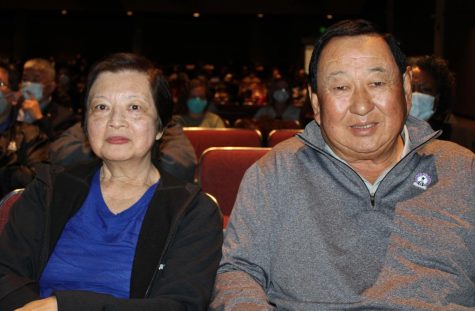
Every year, Space Day features a National Aeronautics and Space Administration (NASA) astronaut as a presenter and this year, those in attendance got to hear from astronaut Michael Reed Barratt.
On Saturday, March 12, students in grades five to 12 participated in the event that has been held annually at Marsee Auditorium in El Camino College since 1999.
Physics professor, Susan Stolovy, who has also been a participant in Science Day since 2012, is always excited about the annual event.
“The idea of Space Day is to engage the youth of the neighboring cities here to come to El Camino College for a presentation by an astronaut and doing hands-on experiments,” Stolovy said. “… not just space science. All the sciences and robotics at El Camino are involved.”
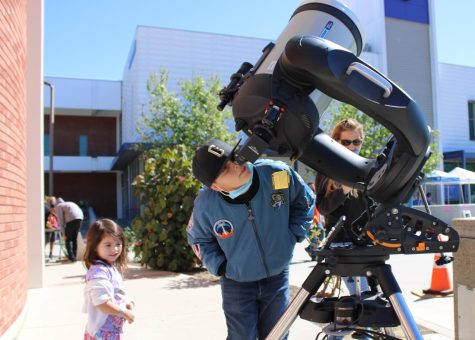
Like Mark Vande Hei, the speaker at the last Science Day in 2020 before COVID lockdowns who is currently in space aboard the International Space Station, Barratt shared his knowledge with the El Camino College community this semester.
Barratt graduated with his Doctor of Medicine, has a masters in aerospace medicine, is board-certified in both internal and aerospace medicine, and wrote a textbook with other NASA scientists called: “Principles of Clinical Medicine for Space Flight” which is a popular resource in aerospace medicine.

Through participating in engaging scientific activities and exploration, Barratt believes Science Day can serve to inspire kids to pursue the sciences.
“We want to send the message that it’s not some genius gene that’s between you and learning science. Every kid should understand this. It’s just that you just got to work at it, [science] and it has to be presented in a way that makes it interesting and engaging,” Barratt said. “Any kid can do this. Any kid can do math. We’re born to be able to do these things and have these skills.”

Before going to space and working for NASA since 1999, Barratt did research as an aquanaut, a person who studies objects underwater, for 11 days, studied across the country and internationally in places like Sardinia and Russia.
Since 2009, he has been aboard two space missions and spent over 211 days in space. On both missions, he left his spacecraft and conducted extravehicular activity and research (EVA) in space for a combined total of over five hours.
Barratt hopes his life and career experiences will encourage kids to work hard to follow their passions.

“We also want to send the message strongly that if the kids really want to do something that excites them, like flying in space or any number of things that are exciting out there, they just have to really want to do it. So build the passion and work at it,” Barratt said.
The Friday before Space Science Day, Barratt also spoke for an hour to the El Camino science classes on campus.
Stolovy, who used to be an astrophysicist for over 10 years before teaching in the astronomy programs at El Camino College, was thrilled about the privileges of hearing an astronaut speak and share their knowledge with students.
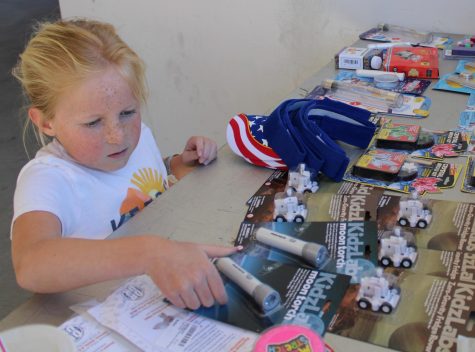
“It’s a real thrill when an astronaut that has been up in space can show pictures and describe what space is like…They can tell you about their daily work, because they actually have work to do. They’re not just looking out of the window all the time, although they want to do that I’m sure,” Stolovy said.
Faculty member Jessica Padilla, a life sciences teacher at El Camino College since 2003, brought her son a few years ago to Science Day. She believes hearing an astronaut is “inspirational” both for students and faculty.
“It’s neat to see the videos and have them walk you through what it’s like to be at the space station and then tell you their experience and journey. It’s inspirational. Kids walk out of there excited,” Padilla said.
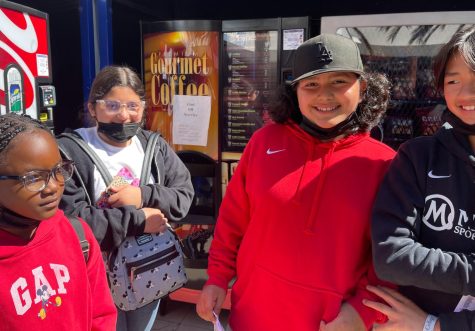
El Camino continues to offer students and community resources and facilities for education and personal improvement through the science, technology and engineering clubs and programs that do tours in places such as Jet Propulsion Laboratory, SpaceX and Northrop Grumman.
“For people to see and hear an astronaut is really inspiring. It’s not fiction. It’s real,” Stolovy said.


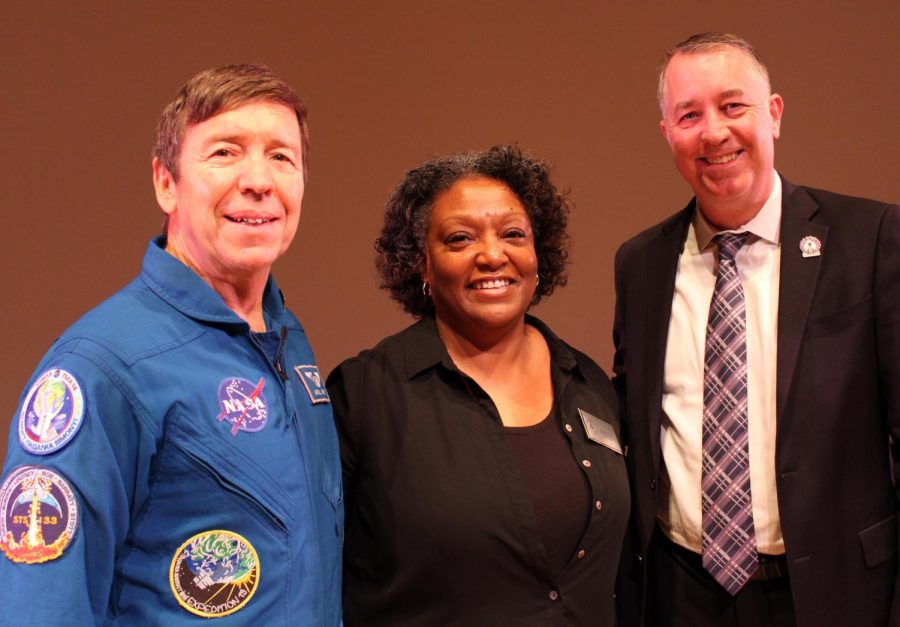
![Physics and astronomy professor Susan Stolovy presents astronomical news and updates to attendees at the first planetarium show of the semester at El Camino College on Friday, March 28. Prior to becoming a professor at ECC, Stolovy completed her doctorate in physics and worked as an astrophysicist for NASA and the California Institute of Technology on spacecraft missions. "[I'm] still very tuned into what's going on in the world of research as well, and I hope to bring a little bit of my experience into the classroom," Stolovy said. (Nikki Yunker | The Union)](https://eccunion.com/wp-content/uploads/2025/03/planetarium-Made-with-Clipchamp-3-frame-at-0m28s-600x338.jpg)
